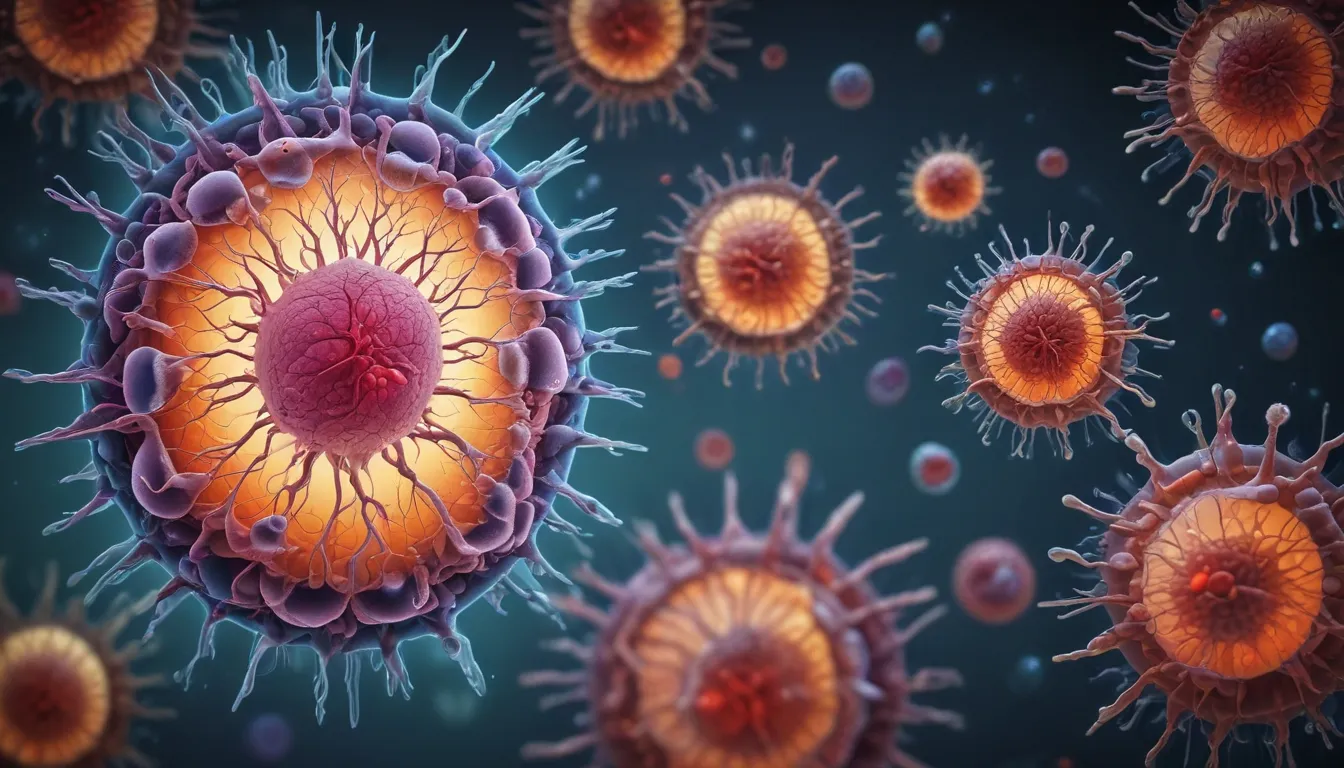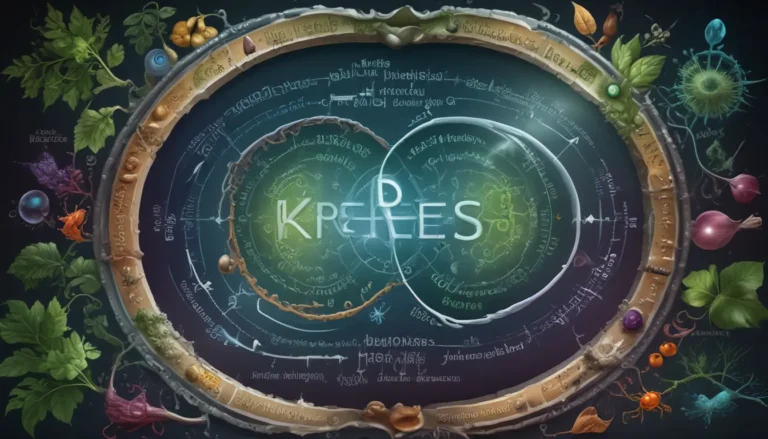A Note About Images: The images used in our articles are for illustration purposes only and may not exactly match the content. They are meant to engage readers, but the text should be relied upon for accurate information.
In the intricate world of cellular biology, stem cell differentiation stands out as a captivating process that underpins the development and maintenance of multicellular organisms. Stem cells possess a unique ability to transform into specialized cell types, giving rise to the diverse tissues and organs that make up our bodies. This remarkable property has sparked the interest of scientists and researchers worldwide, leading to groundbreaking discoveries in the field of regenerative medicine.
Join us as we delve into 17 extraordinary facts about stem cell differentiation that will deepen your understanding of this process and showcase its remarkable potential for medical interventions. From the incredible plasticity of embryonic stem cells to the discovery of induced pluripotent stem cells, prepare to explore the awe-inspiring world of stem cell differentiation.
Key Takeaways:
- Stem cell differentiation is like a magical recipe for creating different cell superheroes in our bodies, crucial for tissue repair and organ development.
- Scientists can control and guide stem cell differentiation in the lab, opening doors for potential treatments and regenerative medicine like a secret potion for healing and fighting diseases.
Unveiling the Intricacies of Stem Cell Differentiation
Stem Cell Differentiation: An Intriguing Symphony of Factors
The differentiation of stem cells is orchestrated by a delicate balance of intrinsic genetic factors and extrinsic signals from the microenvironment. This intricate interplay guides the transformation of unspecialized cells into specialized cell types, shaping the complex structures and functions of our bodies.
A Diverse Array of Cell Types Emerges
Stem cell differentiation has the potential to give rise to a wide range of cell types, including nerve cells, muscle cells, blood cells, and specialized cells in vital organs like the heart and liver. This versatility underscores the fundamental role of stem cells in maintaining the integrity and functionality of tissues and organs.
The Art of Self-Renewal
While undergoing differentiation, stem cells retain the remarkable ability to self-renew, ensuring a continuous supply of undifferentiated cells for tissue repair and regeneration. This balance between differentiation and self-renewal is essential for the maintenance of cellular homeostasis and the body’s ability to heal and regenerate.
Master Regulators of Differentiation
Certain transcription factors act as master regulators in the orchestration of stem cell differentiation, controlling the activation or repression of specific genes. These molecular maestros guide the intricate process of lineage commitment, where stem cells become restricted to particular developmental pathways before fully differentiating into specialized cell types.
The Role of Lineage Commitment
Lineage commitment is a critical step in the differentiation journey of stem cells. It marks the point at which cells commit to a specific developmental pathway, paving the way for their transformation into distinct cell types with specialized functions. This process is essential for the proper development and functioning of tissues and organs in the body.
Inducing Differentiation in the Laboratory
Scientists have devised techniques to induce stem cell differentiation in the laboratory, enabling the generation of specific cell types for research, drug discovery, and regenerative medicine. By manipulating the culture conditions and growth factors, researchers can direct stem cells towards desired cell lineages, unlocking new possibilities for therapeutic interventions.
The Crucial Role of Stem Cell Differentiation in Development
During embryogenesis, stem cells undergo differentiation to give rise to the diverse cell types that form the complex structures and organs of the developing embryo. This process of cellular specialization is essential for the proper growth and functioning of the developing organism, highlighting the significance of stem cell differentiation in embryonic development.
The Dance of Differential Gene Expression
As stem cells differentiate, specific genes are switched on or off, leading to the activation of distinct molecular pathways that drive cell specialization. This differential gene expression plays a central role in shaping the identity and function of specialized cell types, ensuring the proper functioning of tissues and organs in the body.
Unlocking the Potential of Epigenetic Modifications
Epigenetic modifications, such as DNA methylation and histone modifications, play a crucial role in regulating gene expression during stem cell differentiation. These modifications act as molecular switches that control the activation or silencing of genes, influencing the fate and function of differentiated cells.
Influence of the Cellular Microenvironment
The cellular microenvironment, including neighboring cells and the extracellular matrix, can significantly influence the fate and direction of stem cell differentiation. By providing physical and chemical cues, the microenvironment guides the differentiation process, shaping the identity and function of specialized cell types.
The Reversible Nature of Differentiation
In certain cases, differentiated cells can be reprogrammed back into a stem cell-like state through a process called dedifferentiation. This remarkable phenomenon underscores the dynamic nature of cellular identity and the potential for cells to revert to a less specialized state under specific conditions.
Asymmetry in Cell Division
During differentiation, stem cell division can result in two daughter cells with distinct fates, a process known as asymmetric cell division. This asymmetric distribution of cellular components and fate determinants contributes to the generation of diverse cell types with specialized functions, enriching the cellular diversity within tissues and organs.
Unleashing the Potential of Adult Stem Cells
Stem cell differentiation is not limited to embryonic stem cells; adult stem cells in various tissues retain the ability to differentiate and contribute to tissue repair and regeneration. Harnessing the regenerative potential of adult stem cells holds promise for developing novel therapies for a wide range of diseases and injuries.
Enhancing Differentiation with Physical Cues
Physical factors such as substrate stiffness, topography, and mechanical forces can influence stem cell differentiation and tissue morphogenesis. These physical cues play a significant role in shaping the fate and function of differentiated cells, highlighting the importance of the physical microenvironment in directing cellular identity.
Guiding Differentiation with Biochemical Signals
Chemical signals such as growth factors and signaling molecules play a pivotal role in guiding the differentiation of stem cells into specific cell types. By manipulating these biochemical signals, researchers can steer stem cells towards desired cell lineages, opening up new avenues for the development of regenerative therapies and tissue engineering strategies.
The Promise of Stem Cell Differentiation in Medical Advancements
The ability to control and manipulate stem cell differentiation holds great promise for medical advancements in regenerative medicine, tissue engineering, and potential therapies for various diseases and injuries. By harnessing the power of stem cells, researchers aim to develop innovative treatments that leverage the regenerative potential of stem cell differentiation to address unmet medical needs and enhance patient outcomes.
Conclusion: Unraveling the Wonders of Stem Cell Differentiation
In conclusion, stem cell differentiation is a fascinating process that unlocks the potential for developing specialized cells in the body. By understanding the mechanisms and factors that govern differentiation, researchers can harness the regenerative power of stem cells to advance medical interventions and treatments. The intricate dance of differentiation allows cells to adapt and change, ensuring the proper functioning of tissues and organs in the body.
As we continue to unravel the complexities of stem cell differentiation, we embark on a journey towards new medical advancements and therapies. The transformative potential of stem cells offers hope for addressing diseases and conditions that were once considered incurable, paving the way for personalized medicine and regenerative therapies that hold the promise of a healthier future.
FAQs: Exploring the World of Stem Cell Differentiation
Q: What is stem cell differentiation?
A: Stem cell differentiation refers to the process by which unspecialized cells, known as stem cells, transform into specialized cells with specific functions in the body.
Q: How do stem cells differentiate?
A: Stem cells differentiate through various mechanisms, including signals from their surrounding environment, genetic programming, and interactions with specific proteins and molecules in the body.
Q: What are the different types of stem cell differentiation?
A: Stem cells differentiate into three main types: totipotent, pluripotent, and multipotent. Totipotent cells can develop into any type of cell in the body, while pluripotent cells can differentiate into almost any cell type. Multipotent cells have a more restricted differentiation potential and can only develop into a specific range of cell types.
Q: Why is stem cell differentiation important?
A: Stem cell differentiation plays a crucial role in embryonic development, tissue repair, and regeneration. Understanding the mechanisms of differentiation can aid in the development of new therapies for various diseases and injuries.
Q: Can stem cell differentiation be controlled?
A: Researchers are working to understand how to control and manipulate stem cell differentiation. By identifying the factors and signals that influence differentiation, it may be possible to direct stem cells towards specific cell types for therapeutic purposes.
Embark on a journey through the marvels of cellular biology, tissue engineering, and biotechnology to uncover the secrets they hold and explore the fascinating world of scientific discovery. Dive deep into the intricate mechanisms governing life at its most fundamental levels and witness the extraordinary potential for medical breakthroughs that stem cell differentiation offers. Join us in this exploration of the wonders of life and the boundless possibilities that lie ahead in the realm of cellular biology.





